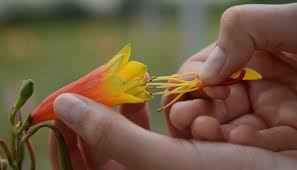Plants Reuse Resources from Wilting Flowers for Future Reproduction

A groundbreaking study published in the journal *Plant Biology* by researchers from Macquarie University and their international collaborators has revealed, for the first time, that plants can recycle resources from wilting flowers to support future reproductive efforts. Lead author Honorary Professor Graham Pyke from Macquarie University emphasized that these findings illuminate a common yet poorly understood process in plant biology. "Our research delivers the first direct demonstration that plants can salvage resources from wilting flowers and reuse these resources to promote future reproduction," he stated.
The three-year study concentrated on *Blandfordia grandiflora*, commonly known as Christmas Bells, a perennial species native to eastern Australia that typically flowers in December. Characterized by its vibrant red and yellow blooms, Christmas Bells are often found in flower markets both locally and internationally. The research took place on a plantation encompassing several hectares of native wet heath, where Christmas Bells bloom profusely alongside a commercial shadehouse.
Using various techniques, the team controlled pollination and the wilting process of the flowers, subsequently examining the effects on seed production and reflowering. Surprisingly, they discovered that the plants did not use resources from wilted flowers to enhance short-term reproduction. Instead, these plants salvage resources invested in reproduction during one flowering season and store them for use during the next.
Specifically, *Blandfordia grandiflora* transfers energy and nutrients from its wilting flowers to underground corms and roots, which then support the production of new flowering stems in the subsequent season, typically a year later. Professor Pyke described the plant's strategy as a fascinating example of resource management and economic decision-making. "Plant economics are all about trade-offs. Plants must decide where to allocate their limited resources; investing in one area means they can't invest as much in another."
This study reveals that plants are not just focusing on immediate reproduction but are strategically saving resources for future growth. Professor Pyke noted the diverse strategies plants have developed for managing their flowers after their primary reproductive function, with wilting being one of several approaches. He pointed out that not all plants adhere to the flower wilting pattern; some flowers continue to bloom long after they can be fertilized or stop producing nectar, thereby enhancing the plant's attractiveness to pollinators.
To further validate their findings, the researchers conducted experiments comparing seed production between plants with wilting flowers and those with petals removed to prevent wilting. They also examined plants where seed production was entirely prevented while allowing wilting in some. The results indicated that plants with wilting flowers had a higher likelihood of reflowering the following season compared to those where wilting was prevented.
Other factors influencing seed production were also evaluated, including flowering stem height, number of flowers per stem, and flower position. Taller stems produced more and heavier seeds, while flowers positioned lower on the plant tended to yield fewer and lighter seeds. Professor Pyke concluded that their findings open up new avenues for research into other plant species and how they manage and reuse resources from wilting flowers. Future studies could investigate the composition of these salvaged resources and assess whether the benefits of conserving them outweigh the costs of initial flower production.
Story Source:
Materials provided by Macquarie University. The original text of this story is licensed under a Creative Commons License. Note: Content may be edited for style and length.
Journal Reference:
- G. H. Pyke, Z.‐X. Ren, J. R. M. Kalman. Why do flowers wilt? Plant Biology, 2024; DOI: 10.1111/plb.13720

0 Comments